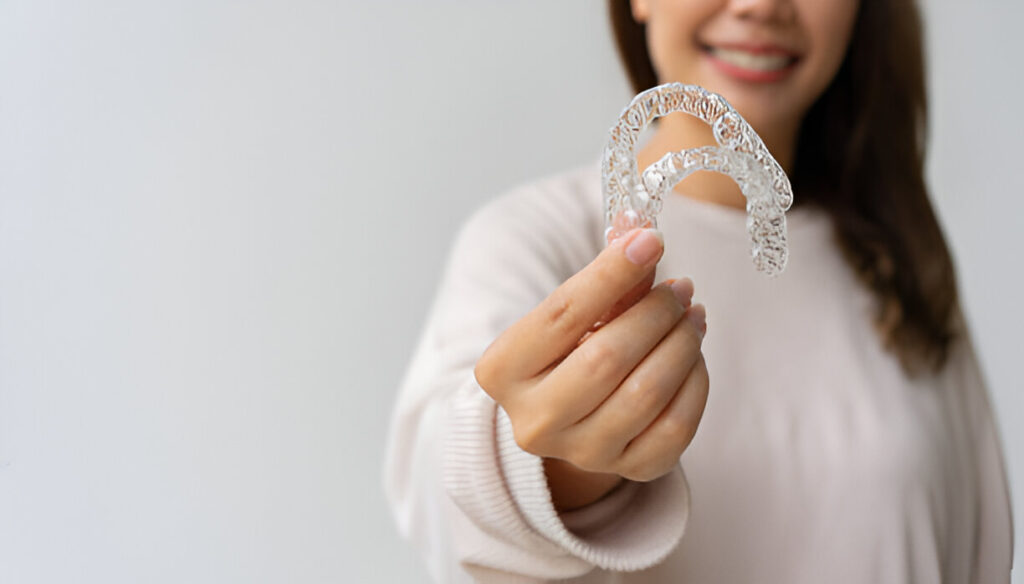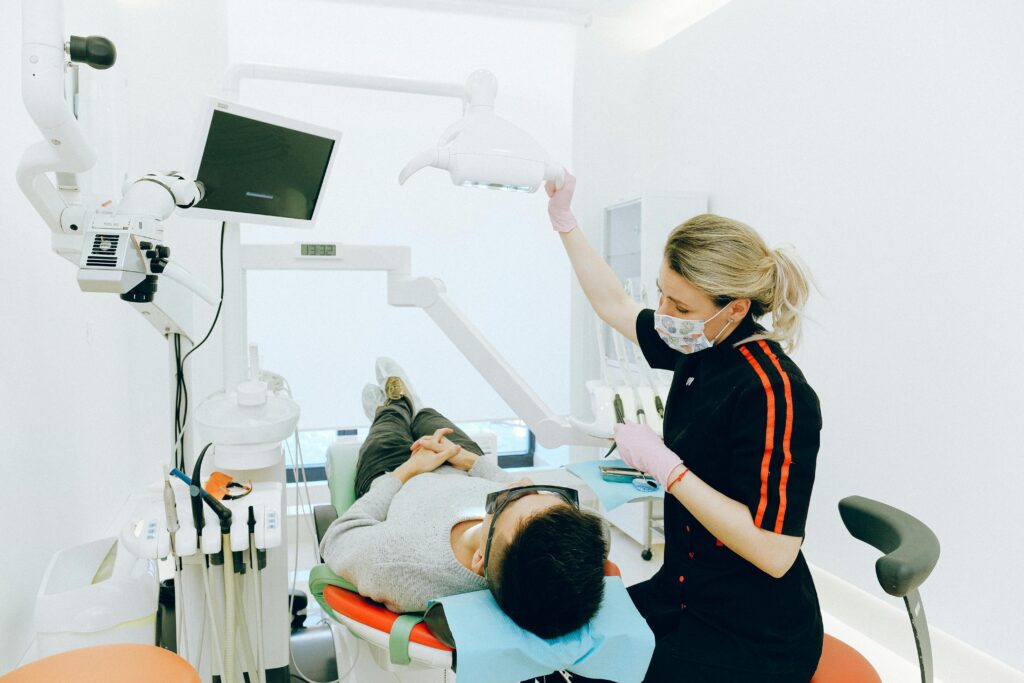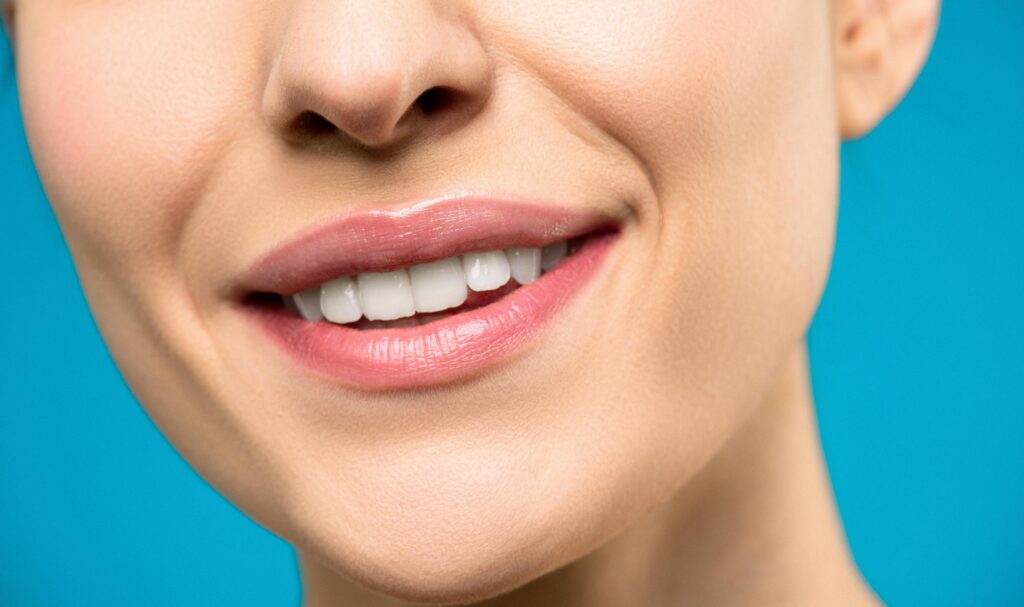Invisalign is a popular choice for people looking to straighten their teeth discreetly. It uses clear aligners that are designed to gradually move your teeth into place. However, many people wonder, “Is Invisalign painful?” In this article, we will explore the discomfort that may come with Invisalign and whether it is something you should be concerned about.
What is Invisalign?
Invisalign aligners are custom-made, clear trays that fit snugly over your teeth. These trays are made from medical-grade plastic and apply gentle pressure to your teeth to move them into the correct position. Unlike traditional metal braces, Invisalign aligners are removable and nearly invisible. This makes them a popular choice for those who want to straighten their teeth without drawing attention to their orthodontic treatment.
Can You Chew Gum with Invisalign?
Is Invisalign Painful?
The short answer is that Invisalign is not usually painful, but some discomfort may occur, especially when you first start wearing the aligners or switch to a new set.
1. Initial Discomfort
When you first begin wearing Invisalign aligners, you may experience mild discomfort. This is completely normal and is a sign that the aligners are working. Your teeth will be shifting into a new position, which can cause temporary soreness. This discomfort typically lasts only a few days, and most people find it goes away once their teeth adjust to the aligners.
2. Pressure on the Teeth
Invisalign aligners are designed to gradually move your teeth by applying pressure. While this pressure can cause some discomfort, it is usually not unbearable. Many people compare the sensation to the feeling you get when you first put on braces. You may feel some tightness or soreness in your teeth, especially after changing to a new set of aligners. However, this discomfort should not last long.
How Long Does It Take to Fix Overbite with Invisalign?
3. Discomfort from Attachments
In some cases, your orthodontist may add small tooth attachments to your teeth. These attachments help the aligners grip your teeth more effectively and guide them into the correct position. While these attachments are small and usually not noticeable, they may cause some discomfort when you first get them placed. However, this discomfort should be temporary, and once your teeth adjust, the feeling will likely disappear.
How to Manage Invisalign Discomfort
If you experience discomfort with your Invisalign aligners, there are several ways to manage it.
1. Pain Relief
For mild discomfort, over-the-counter pain relievers like ibuprofen or acetaminophen can help reduce any soreness. Always follow the instructions on the medication bottle and consult your orthodontist if you have any concerns.
2. Orthodontic Wax for Relief
If your aligners cause irritation to the inside of your cheeks or gums, you can use orthodontic wax. This soft wax can be placed over any areas where the aligners are rubbing, providing a cushion and preventing irritation. Most people find this helpful when they are getting used to their aligners.
Will Wearing an Invisalign Aligner Give Me a Lisp?
3. Wear Your Aligners as Directed
To ensure the aligners work properly, it is important to wear them for the recommended 20 to 22 hours a day. This will help your teeth shift at the correct pace and reduce discomfort caused by improper alignment. If you take your aligners out too often or don’t wear them for the right amount of time, you may experience more discomfort later in the treatment process.
4. Switching to a New Set of Aligners
Every few weeks, you will switch to a new set of aligners. Some people find that the discomfort is slightly worse when they switch to a new set because their teeth are moving into a new position. To reduce the discomfort when switching aligners, you can try wearing your new set for a few hours each day before wearing them for the full 22 hours. This will give your teeth time to adjust gradually.
How Long Does Invisalign Take?
How Long Does the Discomfort Last?
The discomfort from Invisalign is usually short-lived. For most people, any pain or pressure will only last for a few days after starting treatment or switching to a new set of aligners. After the initial adjustment period, the discomfort should subside, and your teeth will gradually shift into place without much discomfort.
In some cases, people may experience mild discomfort or pressure throughout the treatment process, but this is typically a sign that the aligners are working as they should.
Is Invisalign Less Painful Than Braces?
In general, Invisalign tends to cause less discomfort than traditional metal braces. Braces can cause more irritation to the inside of your mouth, as the metal brackets and wires can rub against your cheeks and gums. In contrast, Invisalign aligners are smooth and custom-made to fit your teeth, which makes them more comfortable for most people.
Additionally, with braces, adjustments are often needed every month, which can lead to more discomfort. With Invisalign, you only need to visit your orthodontist every six to eight weeks, and the aligners are replaced periodically, which may reduce the amount of discomfort experienced during treatment.
The Benefits of Invisalign
While some discomfort may occur, Invisalign has many benefits that make it a popular choice for teeth straightening:
- Invisible Treatment: Invisalign aligners are clear, making them less noticeable than metal braces.
- Removable: You can remove the aligners when eating or brushing your teeth, which makes it easier to maintain your oral hygiene.
- Comfort: The smooth plastic design of Invisalign aligners is generally more comfortable than the metal brackets and wires of traditional braces.
- Fewer Orthodontist Visits: Invisalign requires fewer visits to the orthodontist compared to braces, making it more convenient for many people.
Conclusion
Clear aligners Aberdeen, such as Invisalign, are not typically painful, but some discomfort may occur—especially when you first begin wearing the aligners or switch to a new set. This discomfort is usually mild and temporary. Most people find that the benefits of clear aligners, like their discreet appearance and overall comfort, far outweigh any short-term issues.
If you’re considering clear aligners in Aberdeen and are concerned about pain, speak to your orthodontist. They can help you understand what to expect and offer tips on how to manage any discomfort during your treatment.
Get the Smile You’ve Always Wanted at Cove Dental and Implant Centre!
If you’re considering Invisalign but are unsure about the discomfort, our team at Cove Dental and Implant Centre can guide you through the process. Book a consultation today and find out if Invisalign is the right choice for you. Let us help you achieve a beautiful, comfortable smile!
Frequently Asked Question
How long does Invisalign pain last?
Discomfort from Invisalign usually lasts for a few days after starting treatment or changing aligners. Most people experience a mild sensation of pressure as their teeth shift, but this typically subsides within a few days, making the discomfort manageable for most users.
Are Invisalign aligners comfortable to wear?
Yes, Invisalign aligners are made from smooth plastic that fits snugly over your teeth, offering a more comfortable alternative to traditional metal braces. While some mild discomfort is normal, they generally cause less irritation to the gums and cheeks compared to braces.
Can Invisalign cause mouth sores?
Invisalign aligners are less likely to cause mouth sores than traditional braces due to their smooth plastic design. However, if your aligners don’t fit properly or if you don’t clean them regularly, irritation can occur. Using orthodontic wax can help ease discomfort in such cases.
How can I reduce discomfort with Invisalign?
To reduce discomfort, wear your aligners as directed, and switch to a new set gradually. Using pain relievers, orthodontic wax, and drinking cold water can also help. Additionally, ensure your aligners fit correctly by attending regular checkups with your orthodontist.
Can I eat with Invisalign aligners in?
No, Invisalign aligners must be removed before eating or drinking anything other than water. This prevents food from damaging the aligners and ensures your teeth remain clean during treatment. Always brush your teeth after eating before reinserting the aligners to maintain oral hygiene.





